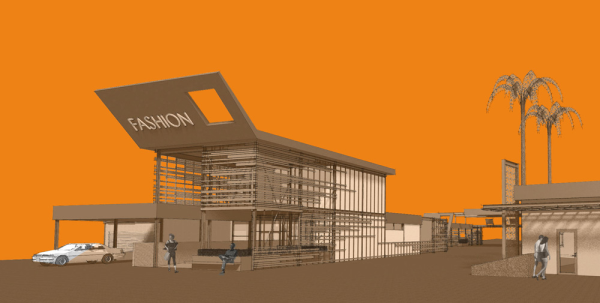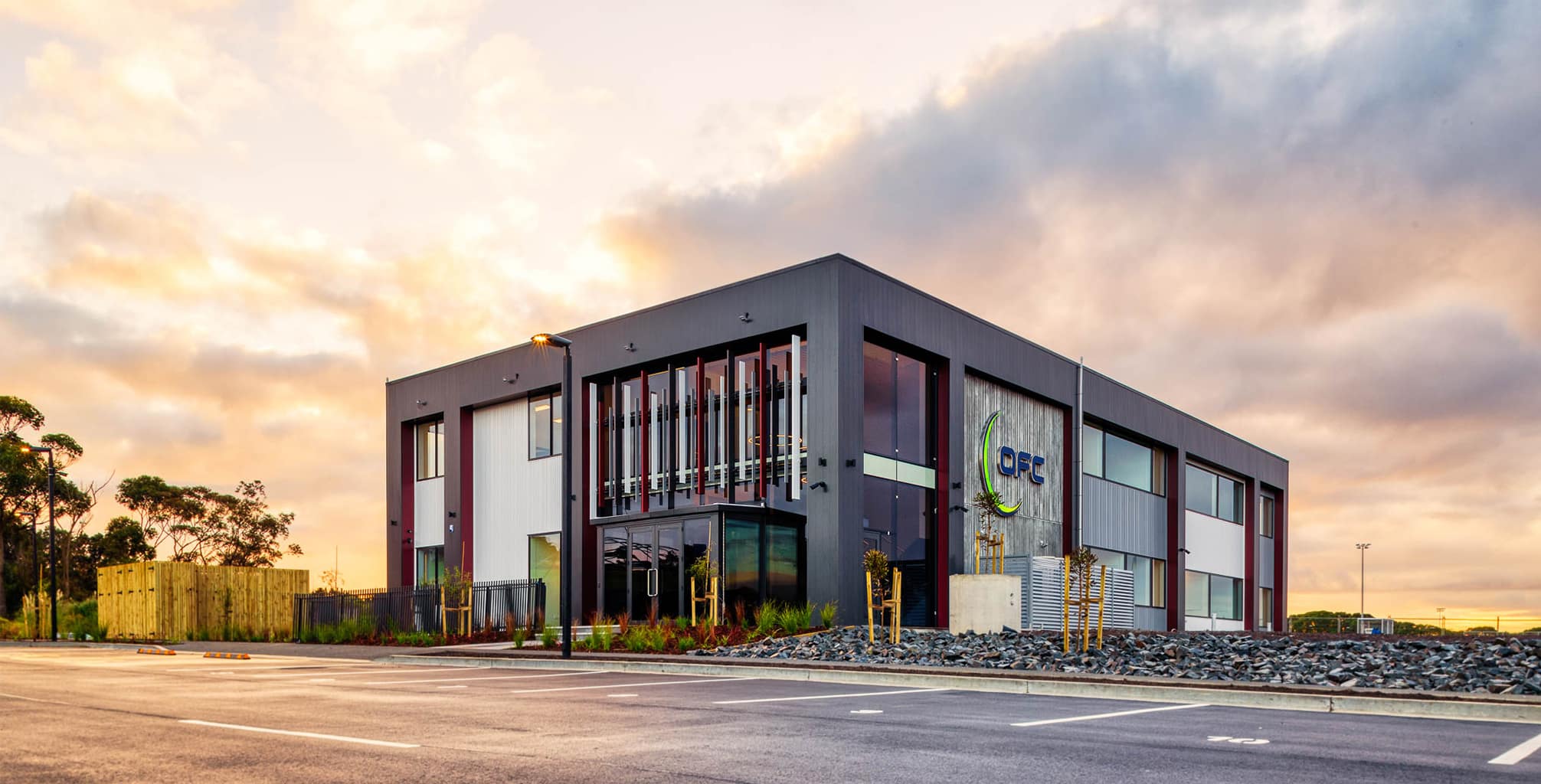Introducing the Comprehensive Services Supplied by Commercial Architects for Modern Developments
Commercial Architects offer a critical feature in contemporary growth tasks. They blend style visual appeals with capability while adhering to governing needs. Their competence extends beyond mere construction, incorporating lasting techniques and innovative modern technologies. As they browse complex zoning regulations, Architects work together with various stakeholders to bring visions to life. This complex strategy questions concerning the progressing function of Architects fit modern-day areas and the effect of their work with future advancements.
Recognizing the Role of Commercial Architects in Modern Developments
In contemporary city landscapes, Commercial Architects play an important function in forming functional and aesthetic rooms that meet varied company demands. Their expertise extends past mere design; they browse complex zoning legislations, building codes, and environmental policies. By teaming up with customers, they recognize details demands, ensuring that each project straightens with the client's vision while likewise taking into consideration practical aspects such as sustainability and cost-effectiveness. Commercial Architects are proficient at integrating cutting-edge innovations and products into their layouts, enhancing both the capability and power effectiveness of structures. They carry out detailed website analyses to assess the potential challenges and chances presented by a place. Furthermore, reliable interaction with specialists and various other stakeholders is essential, making sure that the task proceeds smoothly from perception to conclusion. Inevitably, Commercial Architects are critical in creating areas that not just accomplish functional purposes however likewise add to the total personality and vibrancy of metropolitan settings.
Principle Style: Transforming Ideas Into Fact
Idea layout works as a vital stage in Commercial design, where cutting-edge design services emerge from imaginative thinking. This process counts on collaborative ideation, combining varied perspectives to fine-tune and improve initial ideas. As concepts materialize, they transform from abstract concepts right into substantial architectural realities.
Innovative Design Solutions
Transforming concepts into fact is the trademark of ingenious design services in Commercial architecture. These remedies blend creativity with capability, addressing the distinct demands of contemporary growths. By leveraging innovative innovations and lasting techniques, Architects craft spaces that are not just visually attractive yet also reliable and versatile. Emphasis on user experience drives the style process, making certain that settings foster productivity and collaboration. Each project take advantage of a tailored strategy, where principles are diligently created to reflect the customer's vision while considering future patterns. Innovative style remedies additionally focus on adaptability, allowing for adjustments gradually as organization demands evolve. Inevitably, these methods enhance the overall value of Commercial areas, making them crucial in today's competitive landscape.

Collaborative Ideation Process
Collaboration acts as the foundation of the ideation procedure in Commercial style, promoting imagination and innovation amongst diverse stakeholders. Architects, customers, engineers, and neighborhood participants participate in dynamic conversations, ensuring that all viewpoints are taken into consideration. This inclusive technique allows for the exploration of numerous layout concepts, motivating unique options that align with the project's vision. Through workshops and conceptualizing sessions, concepts develop and improve, transforming initial ideas right into substantial designs. Modern technology likewise plays an essential duty, with devices such as Building Details Modeling (BIM) helping with real-time collaboration and adjustments. Inevitably, this collaborative ideation procedure not only boosts the layout outcome yet also cultivates a sense of ownership and financial investment among all parties included, causing effective Commercial growths.
Zoning Evaluation: Navigating Laws and Conformity
As designers begin on brand-new tasks, recognizing zoning policies is vital to guaranteeing compliance and avoiding pricey hold-ups. Zoning evaluation plays a vital function in this procedure, as it entails assessing regional zoning regulations that determine land usage, building height, thickness, and troubles. Commercial Architects have the expertise to browse these intricate regulations, aiding clients identify permitted uses and any type of essential differences.
Lasting Design Practices: Structure for the Future
Lasting style methods are increasingly necessary in the domain of Commercial architecture, particularly as environmental concerns proceed to escalate. Architects focus on eco-friendly materials, energy-efficient systems, and design approaches that lessen waste and ecological effect. Including renewable resource sources, such as photovoltaic panels and wind generators, permits buildings to generate their own power and reduce reliance on fossil fuels.Furthermore, sustainable design emphasizes the significance of interior ecological high quality. This consists of making use of natural light, improving air flow, and choosing safe materials to improve passenger wellness and efficiency. Environment-friendly roofs and living walls are also popular functions that contribute to biodiversity and urban cooling.Additionally, Commercial Architects frequently incorporate water preservation strategies, like rain harvesting and drought-resistant landscape design. Through these ingenious methods, they produce rooms that not only satisfy modern demands however likewise cultivate a sustainable future, attending to the growing demand for responsible growth in the modern-day world.
Task Management: Ensuring Timely and Efficient Implementation
Reliable task management is necessary for ensuring that Commercial style tasks are completed promptly and within spending plan. This duty encompasses a series of duties, consisting of the coordination of different stakeholders, timelines, and resources. Commercial Architects utilize their proficiency to develop thorough project strategies that outline critical turning points and deliverables, allowing for organized development tracking.Regular interaction among staff member and clients is important, promoting transparency and promoting timely decision-making. Danger monitoring approaches are also utilized to recognize prospective obstacles early, making it possible for positive options to be created. By using innovative task monitoring devices, Architects can check task performance in real-time, making modifications as necessary to keep effectiveness.
Interior Decoration: Developing Functional and Aesthetic Spaces
Interior decoration plays an essential duty in enhancing both capability and visual appeal within Commercial spaces. Efficient space planning can maximize Your Domain Name operations and enhance user experience, while aesthetic style principles add to a visually attractive atmosphere - commercial architects. Together, these aspects produce rooms that are not just functional however likewise motivating
Area Preparation Efficiency
While making best use of the utility of offered room, Commercial Architects focus on area planning effectiveness to develop both functional and aesthetically pleasing settings. This strategy entails cautious analysis of the check out here spatial format to ensure ideal usage of every square foot. Architects take into consideration variables such as process, accessibility, and natural light to enhance functionality. By strategically putting furniture, equipment, and workstations, they help with activity and communication amongst customers, promoting performance. Additionally, zoning different locations for certain functions helps in managing noise and privacy, creating an unified ambience. Via efficient area preparation, Commercial Architects can change restrictions into opportunities, ensuring that each area fulfills the diverse demands of its passengers while sticking to governing requirements and industry standards.
Visual Layout Concepts
Aesthetic design concepts play an essential function in forming environments that are not only functional yet also visually enticing. These principles guide Commercial Architects in producing areas that reverberate with individuals while enhancing brand identification. Crucial element include balance, percentage, and harmony, which interact to create a cohesive appearance. Color schemes and products are very carefully selected to stimulate preferred emotions and sustain the general theme. Furthermore, lights plays a crucial role, affecting straight from the source mood and exposure while highlighting architectural attributes. By incorporating these principles, Architects guarantee that rooms are not just useful however also inviting and inspiring. Inevitably, effective aesthetic design promotes a favorable individual experience, urging interaction and complete satisfaction in Commercial settings.
Cooperation With Stakeholders: Cultivating Successful Partnerships
Successful partnerships in Commercial style depend upon effective collaboration with stakeholders, making sure that every voice is listened to and valued. This joint approach involves engaging numerous events, consisting of clients, contractors, and area participants, throughout the style and growth process. By cultivating open interaction, Commercial Architects can attend to worries, gather insights, and align the project's vision with stakeholder expectations.The assimilation of varied point of views boosts creativity and development, resulting in even more practical and visually pleasing layouts. Regular conferences, comments sessions, and workshops facilitate this dialogue, permitting Architects to adapt their strategies in response to stakeholder input. Furthermore, establishing trust via openness and liability reinforces these partnerships, resulting in a smoother task execution.Ultimately, the success of contemporary advancements relies on the Architects' ability to browse and harmonize varying rate of interests, developing a collective atmosphere that promotes common goals and common success.
Often Asked Concerns
Just How Do Commercial Architects Manage Budget Plan Constraints During a Project?

What Sorts of Software Program Do Commercial Architects Generally Make Use Of?
Commercial Architects typically utilize software program such as AutoCAD for composing, Revit for Structure Info Modeling, SketchUp for 3D modeling, and job administration devices like Microsoft Job to enhance collaboration and simplify process throughout the design procedure.
Can Commercial Architects Aid With Getting Financing for Projects?
Commercial Architects can aid in acquiring funding for tasks by preparing detailed propositions, assisting to articulate design visions, and giving financial forecasts that can improve the chance of securing needed financing from capitalists or banks.
How Do Architects Make Certain Security During the Construction Process?
Architects assure security throughout building by implementing extensive layout criteria, collaborating with engineers, carrying out regular website evaluations, adhering to local guidelines, and fostering interaction among all stakeholders to minimize dangers and advertise a secure workplace.
What Continuous Assistance Do Architects Give After Job Conclusion?
After task completion, Architects use continuous assistance via upkeep examinations, efficiency evaluations, and style alterations. They guarantee structures satisfy developing requirements, address possible issues, and maintain compliance with guidelines, cultivating a long-term partnership with customers.